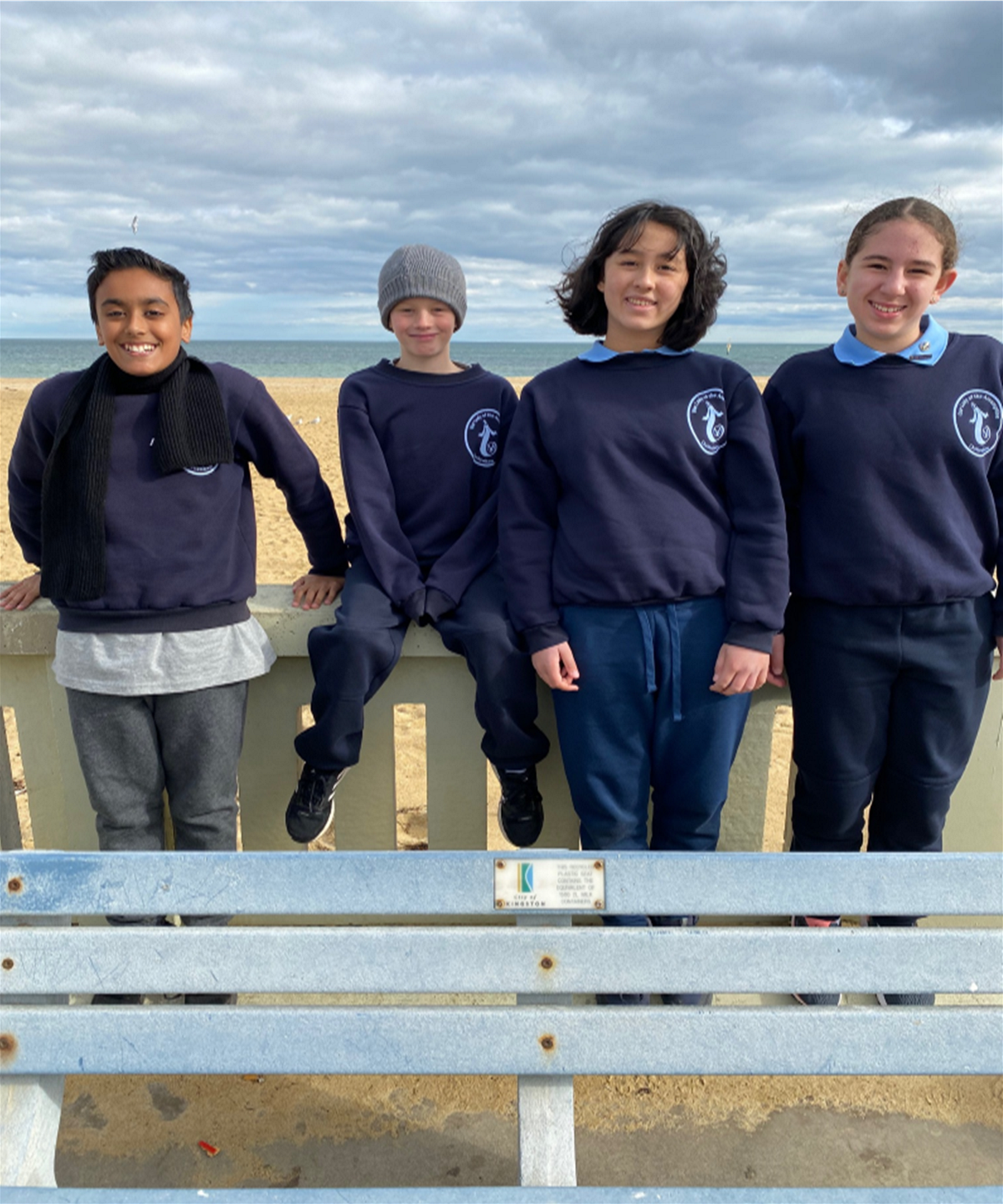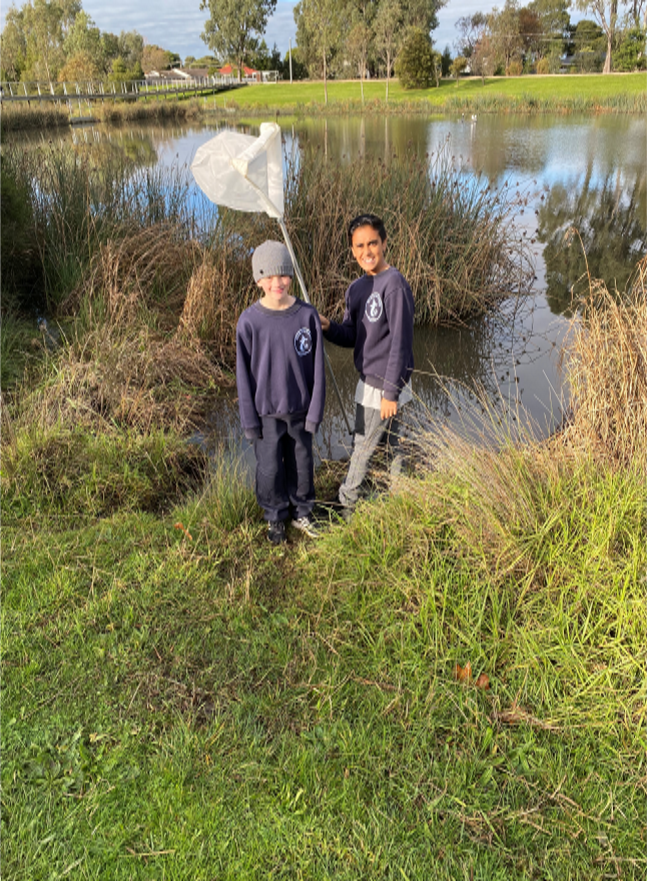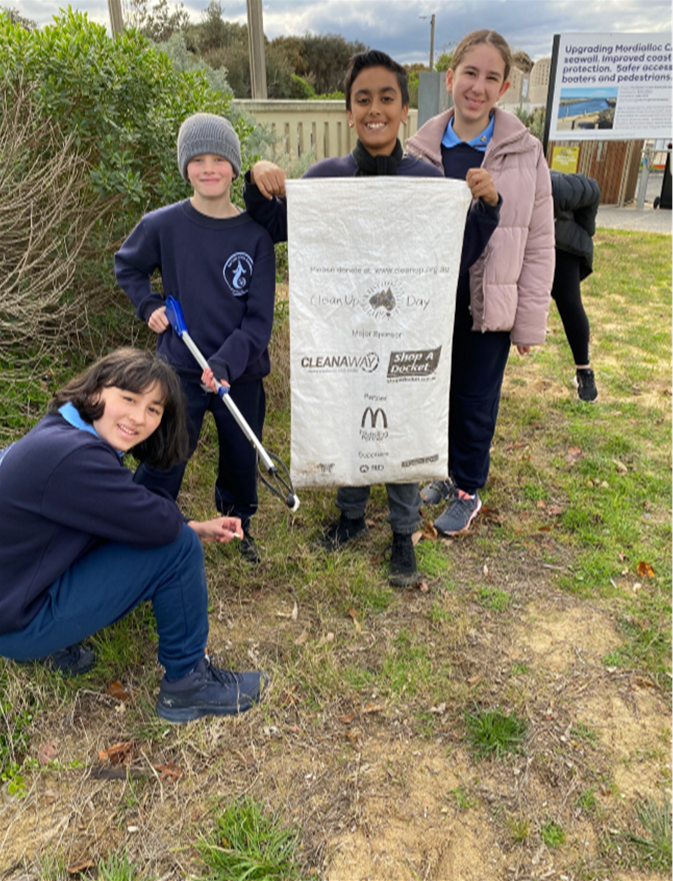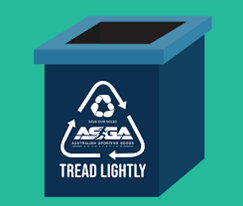iSea iCare
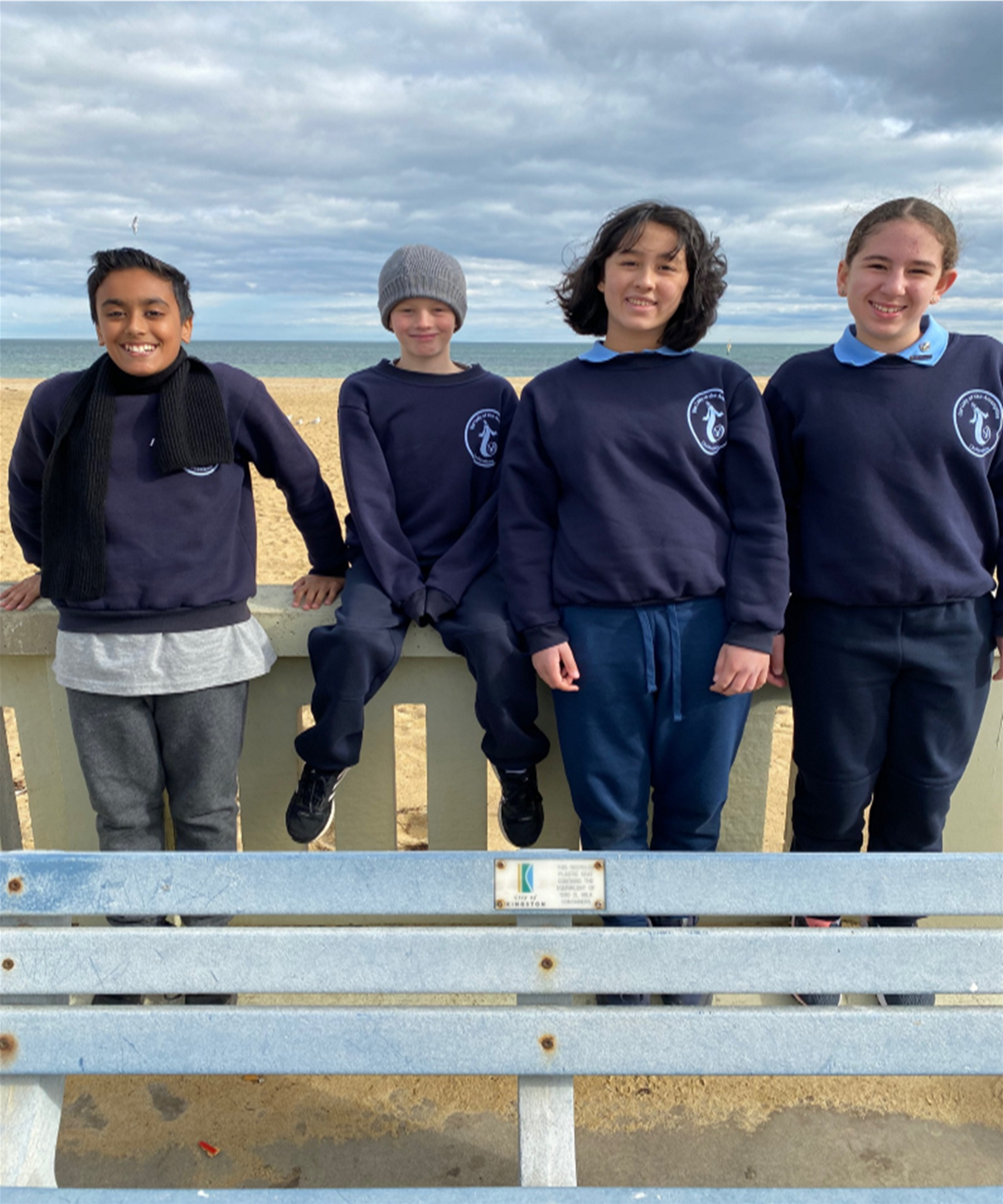
Hello from our Sustainability Leaders
On Tuesday 14 June our Sustainability Leaders attended a Water Catchment Workshop to observe how the Melbourne drainage system works and what we are doing to stop litter from entering our waterways. The students visited a litter trap in Clayton South and learnt how to test the quality of water and then spent the afternoon at Mordialloc Beach. Mia K, Kara G, Oscar L and Alex B shined in their roles as iSea iCare Ambassadors for The Great Southern Reef and also spent time cleaning up rubbish along Mordialloc Pier.
On Tuesday 14 June the four Sustainability leaders went to Namatjira Park to test water pollution and see if the water was good for life and how much pollution was in the water. We used nets to catch and see what bugs were in the water and we found lots of Water Boatmen and one group found a yabby! When we went to Namatjira Park we also learnt about litter traps and bugs that live in the water. We went for a walk to see where the pollution source was coming from and observe other big litter traps. In the afternoon we went to Mordialloc Beach and picked up a lot of rubbish and learnt about nurdles. Mandy who is the leader of iSea iCare also talked about how it was affecting the wildlife and she said that we need to educate people about not littering. By Alex
On 14 June the iSea iCare Ambassadors were fortunate enough to go to Namatjira Park in Clayton where we learnt about the ideal temperatures and weather conditions that are needed for certain bugs and creatures to survive. We got split into two groups and we were the first group to have a go at bug catching. We were lucky enough to catch five Water Boatmen which are tolerable, this means they are able to survive in these areas. We placed each of them in an ice cube container and looked more closely at them. They were very small and it was hard to catch them. One school was even able to find a yabby which was really cool to see and it was a lot bigger than what I had imagined. The next part of the activity was to do some water testing, we formed a semicircle and the instructors passed around samples of the water. The water was quite clear and the PH was close to perfect, the salt levels were 210 and it was really interesting to learn about the different types of tests. The next activity was the most interesting as we watched three men performing their duties as they were emptying out a couple of large nets filled with mostly leaf litter and soft plastics from the litter traps. It seemed like a lot of work for them as they have to do this everyday when they shouldn’t need to because it’s such an easy job to put your rubbish in the bin. After lunch we went to Mordialloc Beach for the next activity. We went down to the sand and conducted a litter audit to identify what was on the surface. We found many things, the most common thing was lollipop sticks. Next we had to collect rubbish along a path with a litter grabber and we made sure not to miss any pieces of rubbish in our area. Then we went on a walk and we needed to observe how much rubbish there was on the paths, but I was surprised as it was mostly clean except for a couple of cigarette butts which we knew we were going to see. We stopped to look at these even larger litter traps that were in the middle of the lake and there was so much rubbish that had been collected. However, we also learnt that if an animal got stuck in it, there would be no way for it to escape unless someone was there to rescue it. I had an amazing time and I learnt that even though we have litter traps they don’t stop all the rubbish from getting trapped. By Mia
On Tuesday 14 June the four Sustainability Leaders went on an excursion to Namatjira Reserve and Mordialloc Beach. We went there to test water pollution, to see how much pollution was in the water and to see if the water is safe for animals to live in. We also captured some animals called Water Boatmen and another group of students from a different school also caught some fish and a yabby! When we went to Mordialloc Beach we picked up rubbish along the pier and learnt about these mini plastics called nurdles. We also went on a walk to find out where the source of the rubbish was coming from. We learnt about how litter traps work. I learnt that the traps are placed just outside of some drains and they catch the big pieces of litter but the smaller pieces of rubbish can still get through. It was a really good excursion and I enjoyed it. By Oscar
The iSea iCare excursion we went on Tuesday was fascinating! We got to find and inspect what different creatures and bugs inhabited a lake to find out if the lake was polluted. We found five Water Boatmen which are a type of insect that are very tolerable, but we didn’t find any insects that were sensitive to pollution. Next the instructors showed us different methods of testing water quality like seeing how high the salt levels of a water sample are or looking at how murky the water is. After that we saw how rubbish is stopped from entering lakes. There were four nets that caught the trash that had to be emptied a lot. We learnt that these nets were not a hundred percent foolproof but people are yet to make a way of stopping rubbish from entering the ocean that is. Then we went to a beach and were taught how to see how much rubbish is on the beach on average and what the source of the rubbish was. The last thing we did was look at a bigger litter trap which was different to the nets since it floated on the water. By Kara.
Care For Our Common Home Parish Update June 2022
Do you have old footwear to recycle? TreadLightly is a national recycling initiative that recycles active lifestyle footwear (sneakers, runners, footy boots, all footwear with soft soles) into gym mats, floors and playgrounds. Look for this box at one of the many footwear stores near you (Rebel, The Athlete’s Foot etc) in Southland, Cheltenham and Brighton. Visit https://treadlightly.asga.com.au for more information.
Steve Pertz & the Sustainability Leaders

